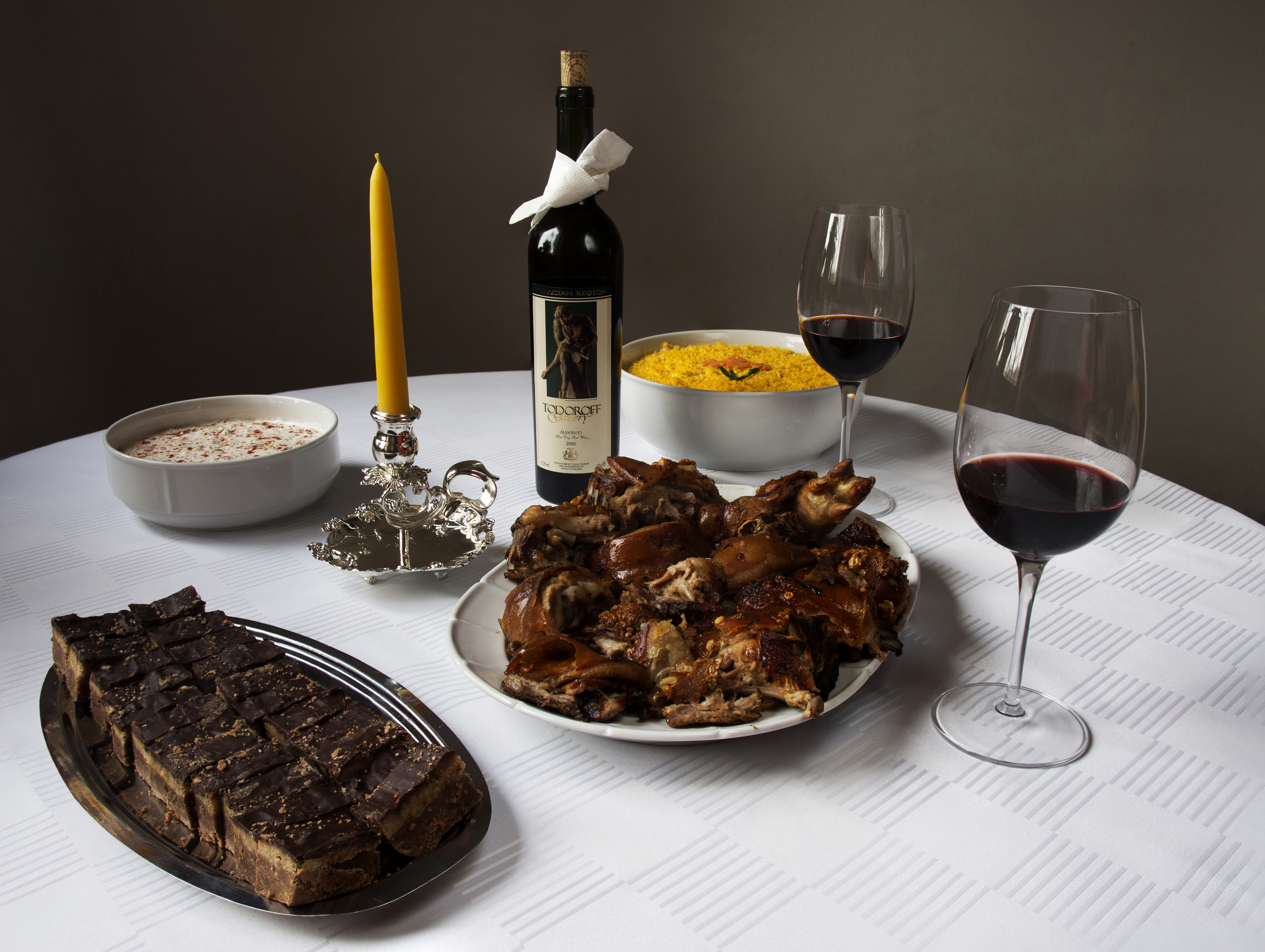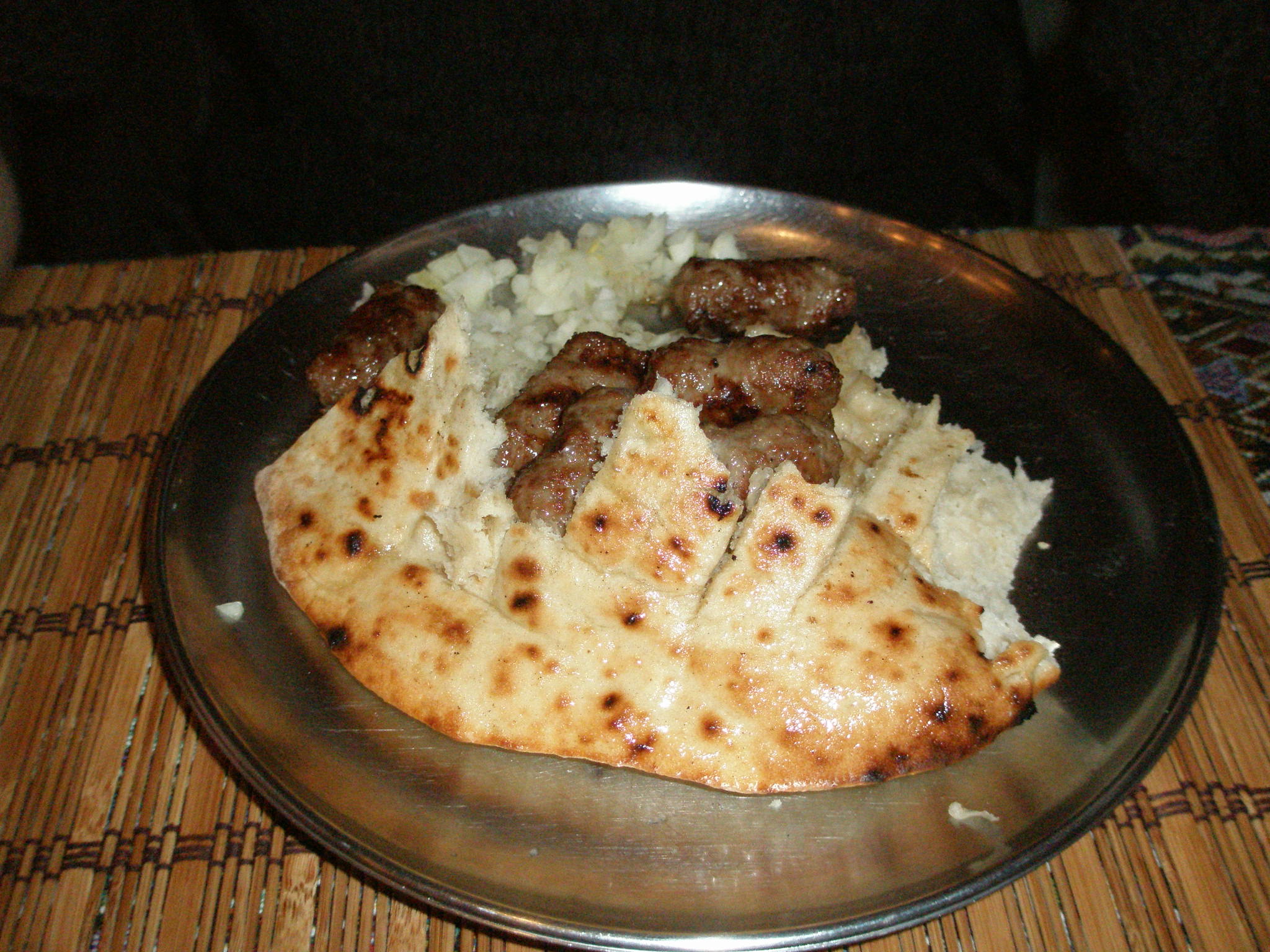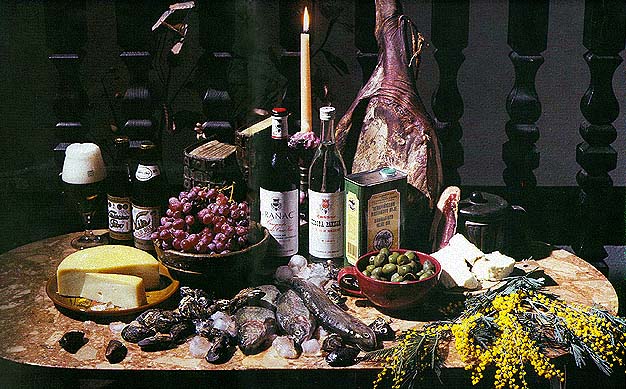|
Popara
Popara ( Cyrillic: ''попара'', gr, παπάρα, ''papara'', tr, papara) is a dish made with bread. Typically the bread is old and has a thick crust, and is soaked in either hot tea, milk or water. Sugar, honey, butter, and cheese are often added. It is mostly made in Bulgaria, Greece, Serbia, Bosnia and Herzegovina, North Macedonia, Turkey and Montenegro. See also * Tirit * Tyurya Tyurya, sometimes known as murtsovka, is a traditional bread soup in the Russian cuisine, sometimes considered a variant of okroshka. It consists of chunks of bread, often stale or semi-stale, or dried/baked into ''sukhari'' biscuits/hardtac ... References Bosnia and Herzegovina cuisine Bulgarian cuisine Greek cuisine Macedonian cuisine Montenegrin cuisine Serbian cuisine Turkish cuisine {{Turkey-cuisine-stub ... [...More Info...] [...Related Items...] OR: [Wikipedia] [Google] [Baidu] |
Bulgarian Cuisine
Bulgarian cuisine ( bg, българска кухня , translit=bǎlgarska kuhnja) is part of the cuisine of Southeast Europe, sharing characteristics with other Balkan cuisines. Bulgarian cooking traditions are diverse because of geographical factors such as climatic conditions suitable for a variety of vegetables, herbs, and fruit. Aside from the vast variety of local Bulgarian dishes, Bulgarian cuisine shares a number of dishes with Persian, Turkish, and Greek cuisine. Bulgarian cuisine includes a significant contribution from Ottoman cuisine, and therefore shares a number of dishes with Middle Eastern cuisine, including ''moussaka'', ''gyuvetch'', '' kyufte'', ''baklava'', ''ayran'', '' gyuvech'', and ''shish kebab''. Bulgarian food often incorporates salads as appetizers and is also noted for the prominence of dairy products, wines, and other alcoholic drinks such as '' rakia''. The cuisine also features a variety of soups, such as the cold soup tarator, and pastries, such ... [...More Info...] [...Related Items...] OR: [Wikipedia] [Google] [Baidu] |
Serbian Cuisine
Serbian cuisine ( sr, српска кухиња / srpska kuhinja) is a Balkan cuisine that consists of the culinary methods and traditions of Serbia. Its roots lie in History of Serbia, Serbian history, including centuries of cultural contact and influence with the Greeks and the Byzantine Empire, the Ottoman Empire, Ottomans, and Serbia's Balkans, Balkan neighbours, especially during the existence of Yugoslavia. Historically, Serbian food develops from pastoral customs that involved the keeping of sheep in mountain highlands, in a climate and regional context that favoured animal husbandry over vegetable farming; Serbian food is therefore traditionally richer in animal products and basic grains - corn, wheat and oats, than fresh vegetable dishes. Following the abandon of widely practiced pastoral lifestyles, Serbian food emerges through the middle ages heavily dependant not on lamb or mutton, but on the keeping of pigs for the annual cull and the production of various cured meats ... [...More Info...] [...Related Items...] OR: [Wikipedia] [Google] [Baidu] |
Bosnia And Herzegovina Cuisine
Bosnia and Herzegovina cuisine ( bs, Bosanska kuhinja) is balanced between Western and Eastern influences. The food is closely related to former Yugoslav, Middle Eastern, Mediterranean, Austo-Hungarian and other Balkan cuisines. Ingredients Bosnian cuisine uses many spices, but usually in moderate quantities. Most dishes are light, as they are cooked in lots of water; the sauces are fully natural, consisting of little more than the natural juices of the vegetables in the dish. Typical ingredients include tomatoes, potatoes, onions, garlic, bell peppers, cucumbers, carrots, cabbage, mushrooms, spinach, courgette, dried and fresh beans, plums, milk, paprika and cream called pavlaka and kajmak. Typical meat dishes include primarily beef and lamb due to Islamic dietary laws, although the Bosnian Croats and Bosnian Serbs can consume pork. Some local specialties are ćevapi, burek, dolma, sarma, ''pilav'' (pilaf), ''gulaš'' (goulash), ajvar and a whole range of Eastern sweets. The ... [...More Info...] [...Related Items...] OR: [Wikipedia] [Google] [Baidu] |
Tirit
Tirit, also known as trit, is a Turkish dish prepared by soaking broken-up stale bread in a broth prepared from offal, and then seasoned with ground pepper and onion. Some variants add cheese or yogurt. Tirit is based on cooking techniques from Central Asia, where similar dishes were prepared using lamb and leftovers of various kinds, often including stale bread; see kuurdak. Tirit is sometimes found in the cuisine of Mecca, where the story is told that the morale of a community hungry from famine brought about by a drought was boosted by being sustained by this dish until the return of times of greater plenty. Khash is a similar offal-based dish eaten in many countries in Eastern Europe, Western Asia, and the southern Caucasus. Edelstein, Sari (2009). Food, Cuisine, and Cultural Competency for Culinary, Hospitality, and Nutrition Professionals. Jones & Bartlett Learning. p. 236. . Similar combinations of offal and grain are found in haggis and some kinds of white pudding ... [...More Info...] [...Related Items...] OR: [Wikipedia] [Google] [Baidu] |
Macedonian Cuisine
Macedonian cuisine ( mk, Македонска кујна, Makedonska kujna) is the traditional cuisine of North Macedonia. It is influenced by Balkan cuisines. The relatively warm climate of the country provides excellent growth conditions for a variety of vegetables, herbs and fruits. Macedonian cuisine is also noted for the diversity and quality of its dairy products, wines, and local alcoholic beverages, such as rakija. Tavče gravče and mastika are considered the national dish and drink of North Macedonia. Foods * Tavče gravče * Turli tava * Ǵomleze, culinary speciality in the Ohrid and Struga region, different from the Turkish gozleme * Ajvar, roasted red pepper spread; can be mild or hot * Kebapchinja * Šopska salad * Polneti piperki, stuffed bell peppers; usually filled with rice or rice with meat * Embroidered peppers, threaded peppers served fresh, dry or as a spice * Ohrid trout, an endemic species of trout in Lake Ohrid * Pita (pastry) * Burek ... [...More Info...] [...Related Items...] OR: [Wikipedia] [Google] [Baidu] |
Montenegrin Cuisine
Montenegrin cuisine is a result of Montenegro's geographic position and its long history and tradition. Review The first major influences to Montenegrin cuisine came from the Levant and Turkey, largely via Serbia: sarma, musaka, pilav, pita, gibanica, burek, ćevapi, kebab, đuveč, and Turkish sweets such as baklava and tulumba. Hungarian cuisine influences stews and sataraš. Central European cuisine is evident in the prevalence of crêpes, doughnuts, jams, many types of biscuits and cakes, and various kinds of breads. Montenegrin cuisine also varies geographically; the cuisine in the coastal area differs from that of the northern highland region. The coastal area is traditionally a representative of Mediterranean cuisine, with seafood being a common dish. The traditional dishes of Montenegro's Adriatic coast, unlike its heartland, have a distinctively Italian influence as well. [...More Info...] [...Related Items...] OR: [Wikipedia] [Google] [Baidu] |
Cyrillic
, bg, кирилица , mk, кирилица , russian: кириллица , sr, ћирилица, uk, кирилиця , fam1 = Egyptian hieroglyphs , fam2 = Proto-Sinaitic , fam3 = Phoenician , fam4 = Greek script augmented by Glagolitic , sisters = , children = Old Permic script , unicode = , iso15924 = Cyrl , iso15924 note = Cyrs (Old Church Slavonic variant) , sample = Romanian Traditional Cyrillic - Lord's Prayer text.png , caption = 1780s Romanian text (Lord's Prayer), written with the Cyrillic script The Cyrillic script ( ), Slavonic script or the Slavic script, is a writing system used for various languages across Eurasia. It is the designated national script in various Slavic, Turkic, Mongolic, Uralic, Caucasian and Iranic-speaking countries in Southeastern Europe, Eastern Europe, the Caucasus, Central Asia, North Asia, and East Asia. , around 250 million people in Eurasia use Cyrillic a ... [...More Info...] [...Related Items...] OR: [Wikipedia] [Google] [Baidu] |
Bulgaria
Bulgaria (; bg, България, Bǎlgariya), officially the Republic of Bulgaria,, ) is a country in Southeast Europe. It is situated on the eastern flank of the Balkans, and is bordered by Romania to the north, Serbia and North Macedonia to the west, Greece and Turkey to the south, and the Black Sea to the east. Bulgaria covers a territory of , and is the sixteenth-largest country in Europe. Sofia is the nation's capital and largest city; other major cities are Plovdiv, Varna and Burgas. One of the earliest societies in the lands of modern-day Bulgaria was the Neolithic Karanovo culture, which dates back to 6,500 BC. In the 6th to 3rd century BC the region was a battleground for ancient Thracians, Persians, Celts and Macedonians; stability came when the Roman Empire conquered the region in AD 45. After the Roman state splintered, tribal invasions in the region resumed. Around the 6th century, these territories were settled by the early Slavs. The Bulgars, led by Asp ... [...More Info...] [...Related Items...] OR: [Wikipedia] [Google] [Baidu] |
Greece
Greece,, or , romanized: ', officially the Hellenic Republic, is a country in Southeast Europe. It is situated on the southern tip of the Balkans, and is located at the crossroads of Europe, Asia, and Africa. Greece shares land borders with Albania to the northwest, North Macedonia and Bulgaria to the north, and Turkey to the northeast. The Aegean Sea lies to the east of the Geography of Greece, mainland, the Ionian Sea to the west, and the Sea of Crete and the Mediterranean Sea to the south. Greece has the longest coastline on the Mediterranean Basin, featuring List of islands of Greece, thousands of islands. The country consists of nine Geographic regions of Greece, traditional geographic regions, and has a population of approximately 10.4 million. Athens is the nation's capital and List of cities and towns in Greece, largest city, followed by Thessaloniki and Patras. Greece is considered the cradle of Western culture, Western civilization, being the birthplace of Athenian ... [...More Info...] [...Related Items...] OR: [Wikipedia] [Google] [Baidu] |
Serbia
Serbia (, ; Serbian language, Serbian: , , ), officially the Republic of Serbia (Serbian language, Serbian: , , ), is a landlocked country in Southeast Europe, Southeastern and Central Europe, situated at the crossroads of the Pannonian Basin and the Balkans. It shares land borders with Hungary to the north, Romania to the northeast, Bulgaria to the southeast, North Macedonia to the south, Croatia and Bosnia and Herzegovina to the west, and Montenegro to the southwest, and claims a border with Albania through the Political status of Kosovo, disputed territory of Kosovo. Serbia without Kosovo has about 6.7 million inhabitants, about 8.4 million if Kosvo is included. Its capital Belgrade is also the List of cities in Serbia, largest city. Continuously inhabited since the Paleolithic Age, the territory of modern-day Serbia faced Slavs#Migrations, Slavic migrations in the 6th century, establishing several regional Principality of Serbia (early medieval), states in the early Mid ... [...More Info...] [...Related Items...] OR: [Wikipedia] [Google] [Baidu] |
Bosnia And Herzegovina
Bosnia and Herzegovina ( sh, / , ), abbreviated BiH () or B&H, sometimes called Bosnia–Herzegovina and often known informally as Bosnia, is a country at the crossroads of south and southeast Europe, located in the Balkans. Bosnia and Herzegovina borders Serbia to the east, Montenegro to the southeast, and Croatia to the north and southwest. In the south it has a narrow coast on the Adriatic Sea within the Mediterranean, which is about long and surrounds the town of Neum. Bosnia, which is the inland region of the country, has a moderate continental climate with hot summers and cold, snowy winters. In the central and eastern regions of the country, the geography is mountainous, in the northwest it is moderately hilly, and in the northeast it is predominantly flat. Herzegovina, which is the smaller, southern region of the country, has a Mediterranean climate and is mostly mountainous. Sarajevo is the capital and the largest city of the country followed by Banja Luka, Tu ... [...More Info...] [...Related Items...] OR: [Wikipedia] [Google] [Baidu] |
North Macedonia
North Macedonia, ; sq, Maqedonia e Veriut, (Macedonia before February 2019), officially the Republic of North Macedonia,, is a country in Southeast Europe. It gained independence in 1991 as one of the successor states of Socialist Federal Republic of Yugoslavia, Yugoslavia. It is a landlocked country bordering Kosovo to the northwest, Serbia to the north, Bulgaria to the east, Greece to the south, and Albania to the west. It constitutes approximately the northern third of the larger geographical Macedonia (region), region of Macedonia. Skopje, the capital and largest city, is home to a quarter of the country's 1.83 million people. The majority of the residents are ethnic Macedonians (ethnic group), Macedonians, a South Slavs, South Slavic people. Albanians in North Macedonia, Albanians form a significant minority at around 25%, followed by Turks in North Macedonia, Turks, Romani people in North Macedonia, Romani, Serbs in North Macedonia, Serbs, Bosniaks in North Mac ... [...More Info...] [...Related Items...] OR: [Wikipedia] [Google] [Baidu] |


.jpg)

